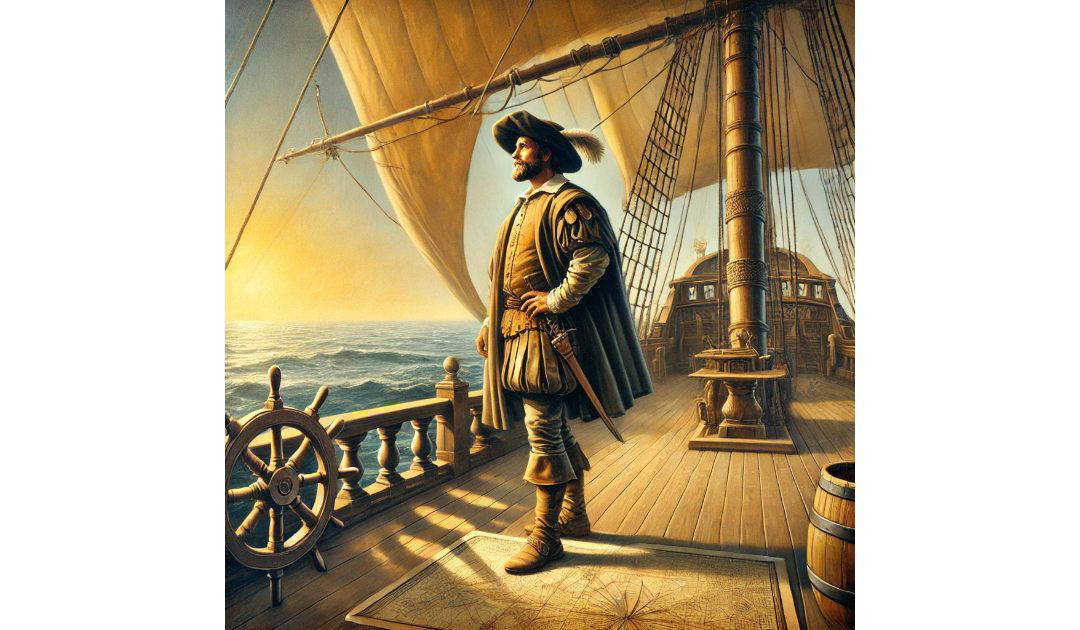I recently posted about John Cabot, who sailed from Bristol to North America. But now for the man whose after whom the continent is named. Amerigo Vespucci was born on the 9th of March, 1454. Amerigo Vespucci (1454 – 1512) was an Italian explorer, navigator, and cartographer whose name became forever associated with the American continents. While not as famous as Christopher Columbus, Vespucci played a crucial role in reshaping European understanding of the New World. His voyages and letters provided compelling evidence that the lands across the Atlantic were not part of Asia but an entirely new continent, an insight that led to the name “America” being derived from his first name.
Born on March 9, 1454, in Florence, Italy, Amerigo Vespucci came from a wealthy family involved in banking and commerce. As a young man, he worked for the influential Medici family, managing their business interests in Spain. This position gave him access to maritime trade and exploration at a time when European nations were competing for overseas territories.
Inspired by the discoveries of Columbus and other explorers, Vespucci developed a keen interest in navigation and exploration. By the late 1490s, he had become involved in voyages across the Atlantic, helping to finance and participate in expeditions to the New World.
The exact details of Vespucci’s voyages remain a subject of historical debate. However, it is widely believed that he took part in at least two major expeditions between 1499 and 1502.
Vespucci is thought to have sailed under the command of Spanish explorer Alonso de Ojeda. This expedition reached the coast of present-day Guyana and explored parts of northern South America, including the mouth of the Amazon River. Vespucci’s observations about the landscape, wildlife, and native peoples were among the earliest detailed European descriptions of the region.
The second voyage, sponsored by Portugal, was arguably the most significant of Vespucci’s journeys. Sailing along the eastern coast of South America, Vespucci and his crew traveled as far south as present-day Argentina. He realised that the landmass he was exploring was far larger than previously thought, leading him to conclude that it was not part of Asia but an entirely new continent.
Vespucci’s groundbreaking insight was that the lands discovered by Columbus were not the outskirts of Asia but a distinct continent. He documented his findings in letters and reports, which were widely circulated in Europe. In 1507, the German cartographer Martin Waldseemüller published a world map in which he labeled the new continent “America” in Vespucci’s honour, based on the Latinised version of his name, “Americus.”
Waldseemüller later tried to retract the name, but by then, “America” had already gained widespread acceptance. Over time, the name was extended to include both North and South America.
Vespucci continued working in the field of navigation and exploration, eventually becoming the chief navigator for Spain’s Casa de Contratación, an institution that oversaw maritime affairs. He played a key role in training future explorers and refining navigational techniques. He died on February 22, 1512, in Seville, Spain.
Although Vespucci did not discover new lands in the same way as Columbus or Magellan, his contribution to geography was profound. His recognition of the Americas as a separate landmass reshaped European worldviews and influenced future exploration. Today, his name endures in the very identity of the continents he helped to define.

